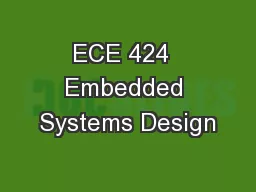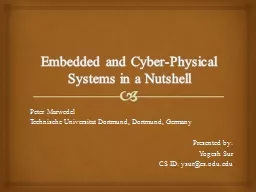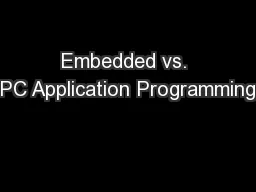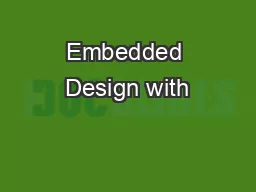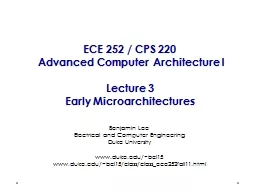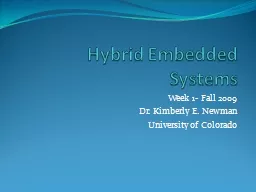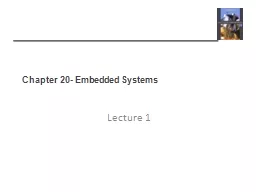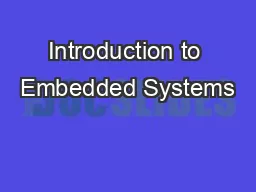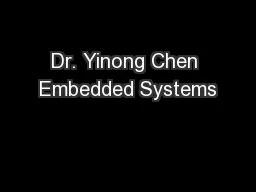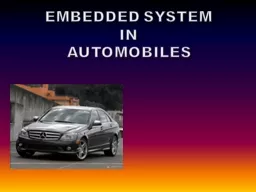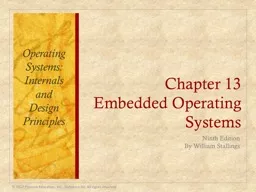PPT-ECE 424 Embedded Systems Design
Author : myesha-ticknor | Published Date : 2018-10-31
Embedded Linux Overview Chapter 8 Ning Weng Whats so special about Linux Multiple choices vs sole source Source code freely available Robust and reliable Modular
Presentation Embed Code
Download Presentation
Download Presentation The PPT/PDF document "ECE 424 Embedded Systems Design" is the property of its rightful owner. Permission is granted to download and print the materials on this website for personal, non-commercial use only, and to display it on your personal computer provided you do not modify the materials and that you retain all copyright notices contained in the materials. By downloading content from our website, you accept the terms of this agreement.
ECE 424 Embedded Systems Design: Transcript
Download Rules Of Document
"ECE 424 Embedded Systems Design"The content belongs to its owner. You may download and print it for personal use, without modification, and keep all copyright notices. By downloading, you agree to these terms.
Related Documents

